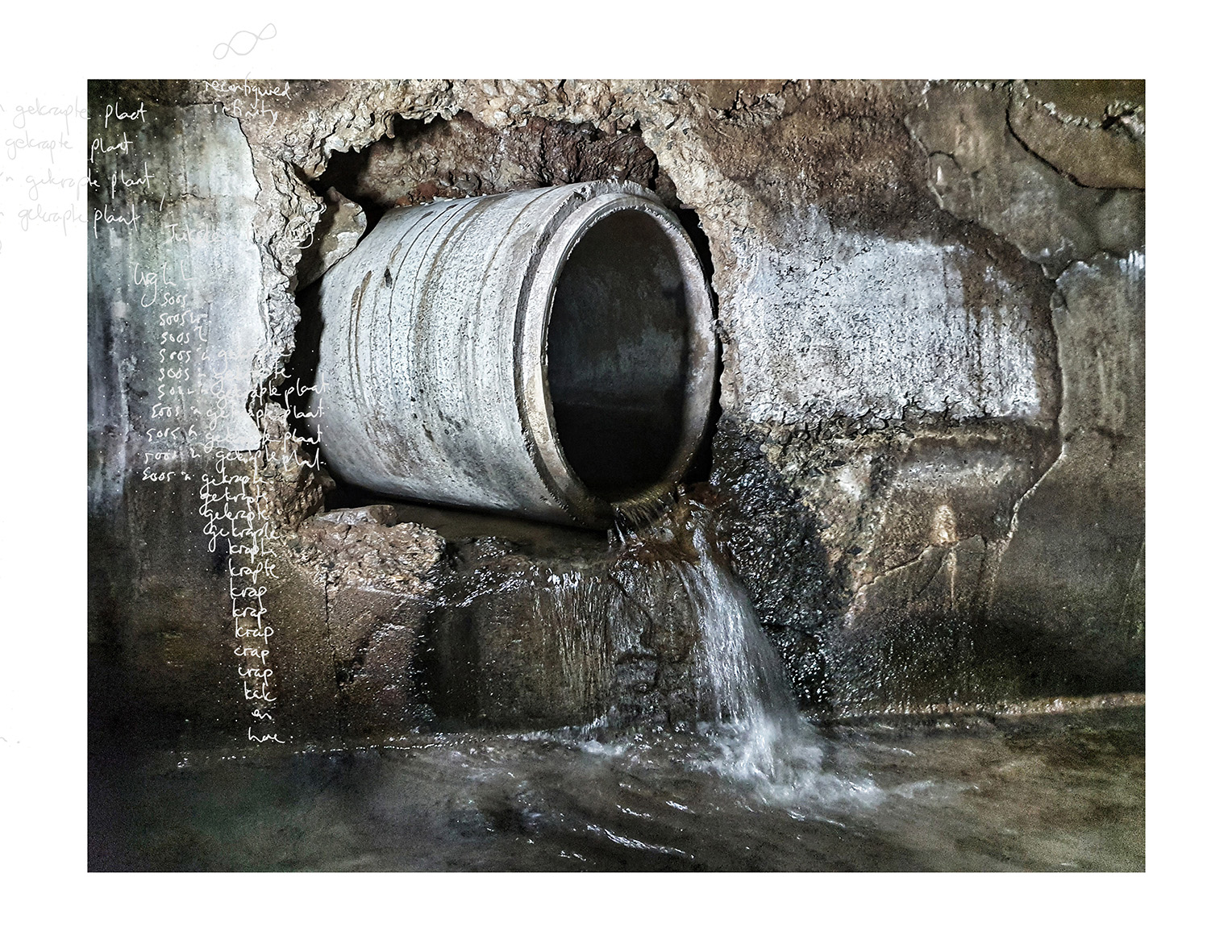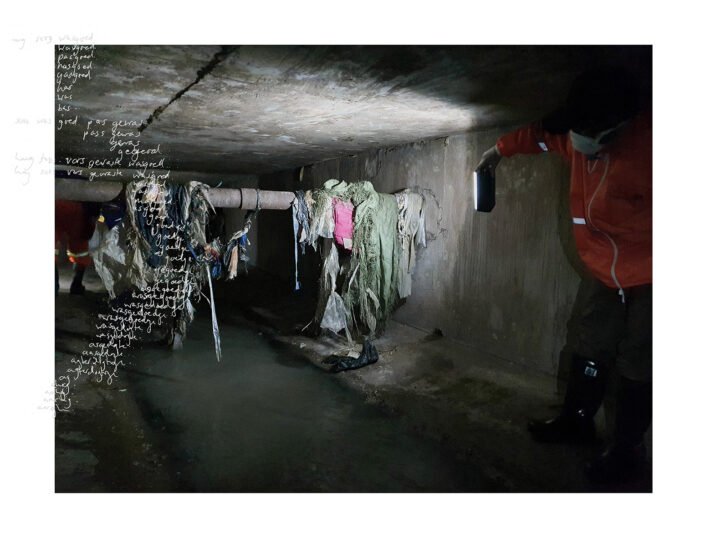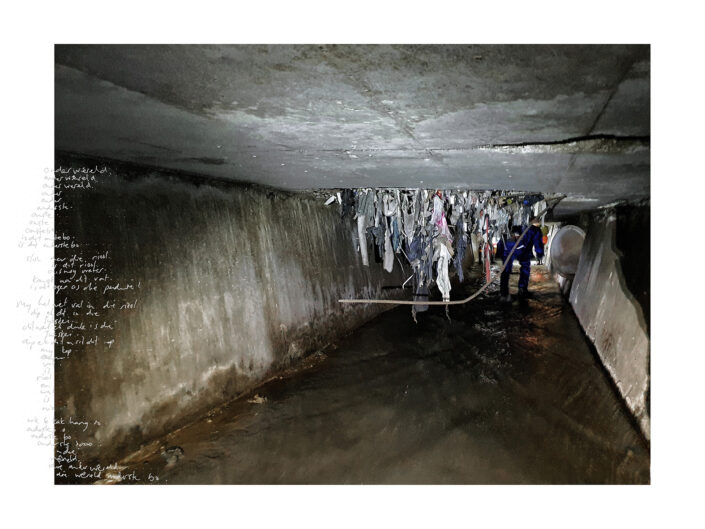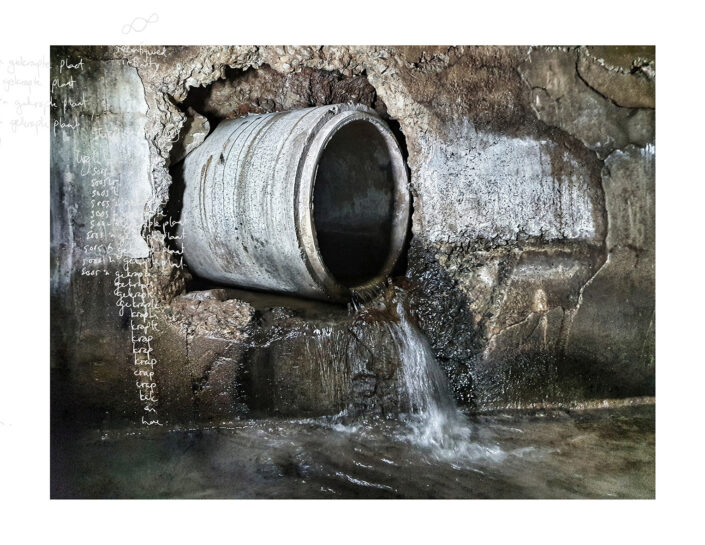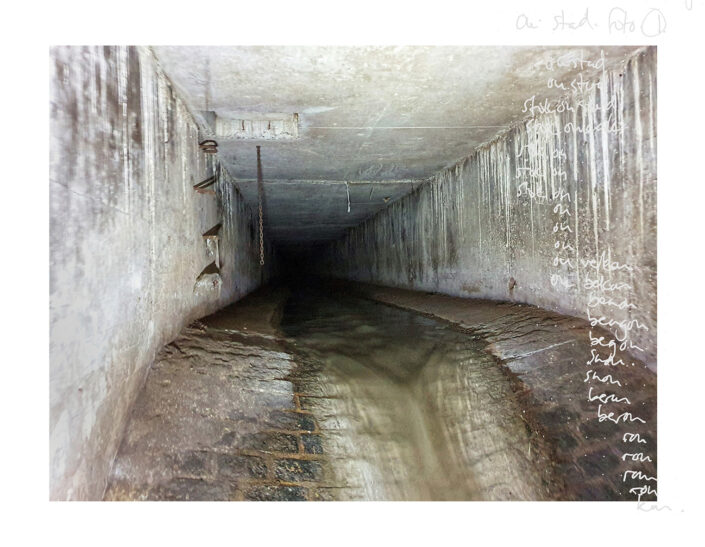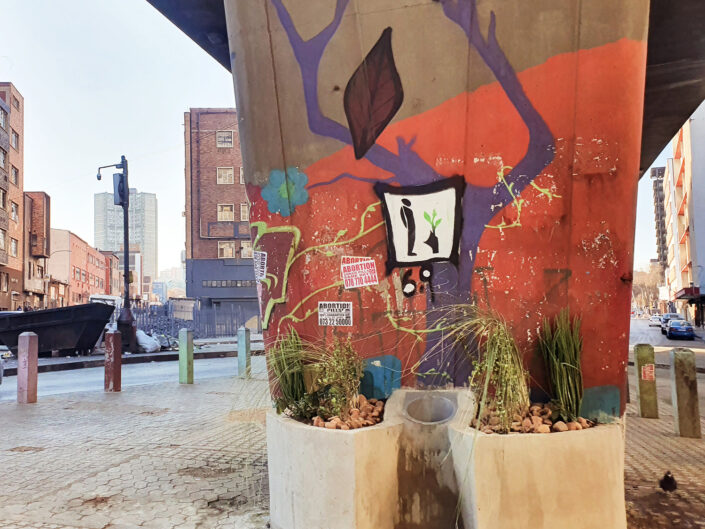2020 Finding the eye of Jukskei river beneath Joburg
Artist and footage : Hannelie Coetzee
Editor: Reney Warrington
Medium: Video
Duration: 2:40sec.
Music: Mirrors by Composer, Jaco Meyer and performer, Carel Henn
29 September 2020
In Michelangelo Pistelettos Third Paradise Manifesto, he suggests we cure the world with a regenerative loop: the artificial paradise we should build to get close to nature. Incorporate nature in our everyday problem solving of what we have created. He uses the infinity sign and reconfigures it with a third loop, like three eyes. The extra middle loop is our artificial paradise which can help us to build heathier futures.
In this work I joined the Johannesburg Roads Agency engineers along with author, Sean Christie in an urban underground expedition, to search for one of the three eyes of the Jukskei River. We had to do it in August when the water levels are at its lowest in the winter dry season. Once the thunderstorms start in September it will wash you away within minutes.
The Jukskei river is the only perennial river in Johannesburg. All the other streams dry up from time to time. That is why I moved my studio to Victoria yards, to be in the Jukskei catchment area, to focus my energy on this work.
The city is built on a goldmine which extracted gold amounting to half of the world’s gold in total. In my opinion, the gold of the future will be water. Climate change is heating up our city and our arid country will experience even drier winters and shorter more intense thunderstorms. This puts even more pressure on our already limited access to water and failing infrastructure. I co-founded the NGO, Water for the Future, along with Romy Stander and Paul Mackenzie to create a platform for our wide network of out the box thinkers to co-design multiple eco-cultural interventions that help us adapt to this future, but from a more informal grassroots perspective.
On August 28th we set out with full PPE, gumboots, headlamps, and of course face masks, in case the pandemic catches us underground, and we faced sludge, cockroaches and sewage rats to find one of the eyes of the Jukskei River. Andre Nel, OPS manager of the JRA, headed up our expedition. He went underneath the Ellis Park complex a decade ago before the BRT bus system was built on Bertrams Road, so we had to open a couple of dummy manhole covers to get to the stormwater culvert in which the Jukskei eye flows. We went underground near the Ellis park swimming pools, with the JMPD standing guard, and walked up a couple of blocks under the roads to follow the flow of the water.
Voila! We found the clear water running from the piped-up eye, into the contaminated culvert after only a couple of hours of searching. Jukskei River catchment hydro engineer, Stuart Dunsmore, took samples to compare the clear water to the contaminated water and it tested clear a couple of weeks later. We felt we found gold!
Now, this year more than ever, we have our work cut out to pilot societal interventions which helps us learn how and why we should move on from our old ways.
In my praxis, I bring ongoing research and fieldwork back to the arts. Site specific interventions help society make sense of the mess that we are in. This short video brings the visuals of this odd day to the people who might have always wondered what the eye looks like. It was indeed shocking. We can only improve on this heart-breaking sight. Our ongoing work aims to surface the clear water and grow something important, to flip the river into a usable stream, to regenerate the toxic run off, to relieve the culverts, and prevent flash floods such as the one that hit Gilloolies Interchange in 2016.


